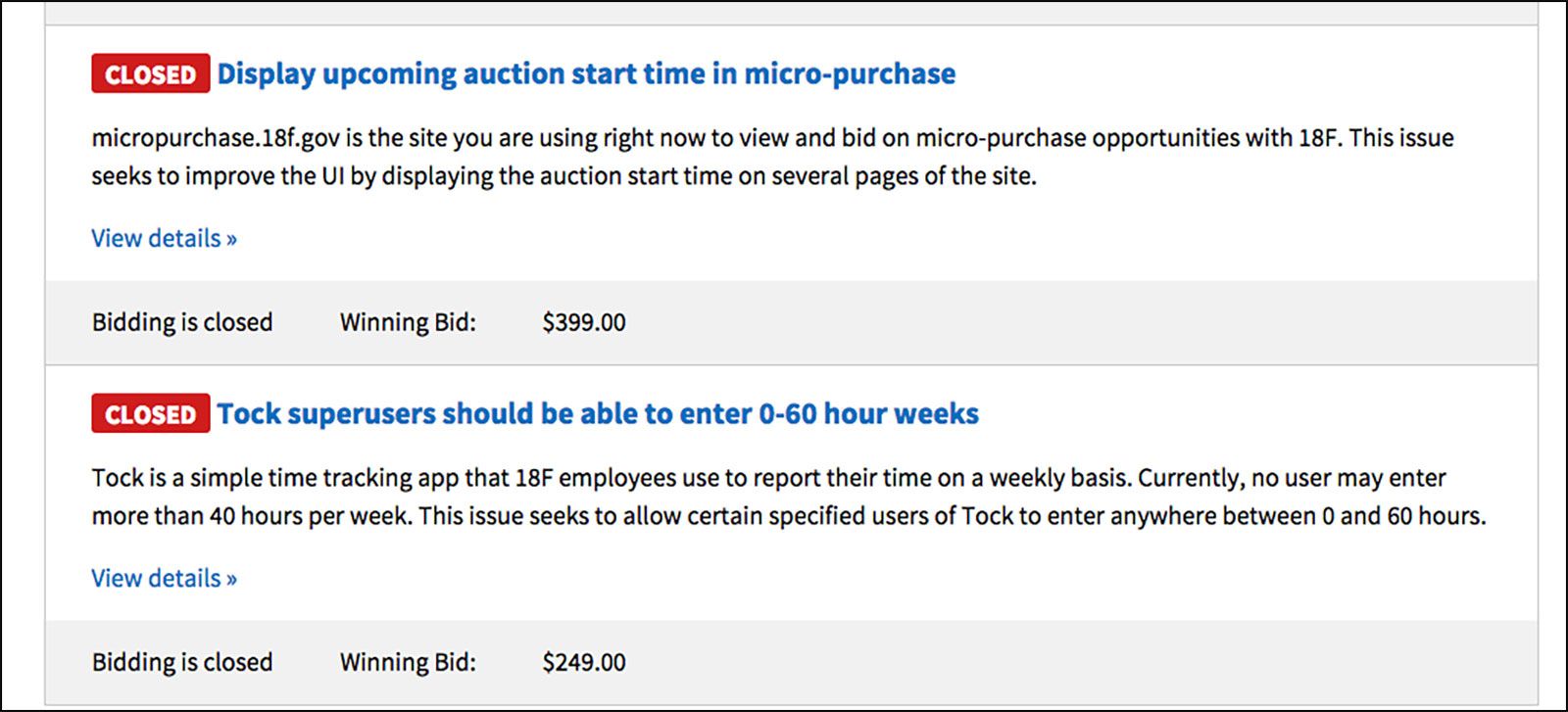
The auctions have closed, the bids are in, the winners are off coding, and some already have been paid. Let’s look at some early lessons from our latest round of micro-purchase auctions.
First, some numbers.
- We conducted five simultaneous auctions.
- The auctions addressed issues in two internal 18F projects, including the micro-purchase platform itself.
- We received 59 bids.
- The lowest winning bid was $249 and the highest winning bid was $399.
- Each auction had three or more unique bidders, with one auction having six unique bidders.
- All winners were small businesses, and one winning bidder is a service-disabled veteran-owned small business.
When we launched our initial micro-purchase experiment, we envisioned it as a low-risk, lightweight way to get new vendors working with the government on open source solutions to small problems that would be too cumbersome to address with traditional contracting methods. This round of auctions continues to support our hypothesis that providing a lower barrier to working with the government will attract new vendors and provide tangible benefits to government agencies.
One of the big lessons from our first experiment was that to grow this project, we needed a better way for vendors to bid on auctions. In the first round, vendors had to use a Google Form to bid and a GitHub issue to track the auction. That system was a workable minimum viable product, but for this round of auctions, our team built a brand-new micro-purchase platform that we hoped would be more intuitive for vendors and easier for the public to navigate.
We’re pleased with the performance of the new platform, though we did have one bug that was accidentally recording $1,000 bids as $1 bids. (It truncated everything after a comma.) We’ve fixed that issue and are now making additional improvements to the platform. In fact, two of the auctions in this round were for issues with the micro-purchase platform itself, and a solution to one of those auctions was submitted and accepted less than 24 hours after the auction closed.
We were also pleased to see a wider range of winning bids in this round. Our first micro-purchase auction ended in a $1 winning bid, but this round’s winners bid between $200 and $400. This provides more evidence that there’s a market for small open source tasks and an interested and talented pool of vendors ready to get involved.
What’s next
As we continue to experiment with ways to get the vendor community involved, we’ll also explore new models beyond a reverse auction. We liked the data points we saw this time around, and think that we can make the system more attractive to use. But we still have a lot to learn about how to really make this sustainable.
Please sign up for our 18F Acquisition email list to stay up to date and follow updates through our @18F Twitter account.
And as always, we’ll share as we continue to experiment, learn, and iterate.

